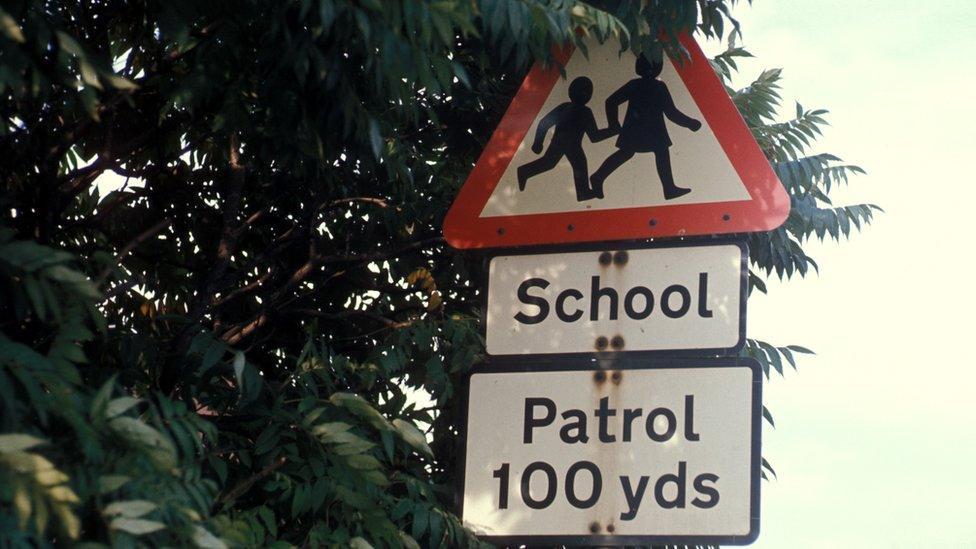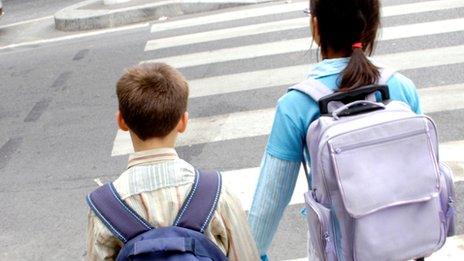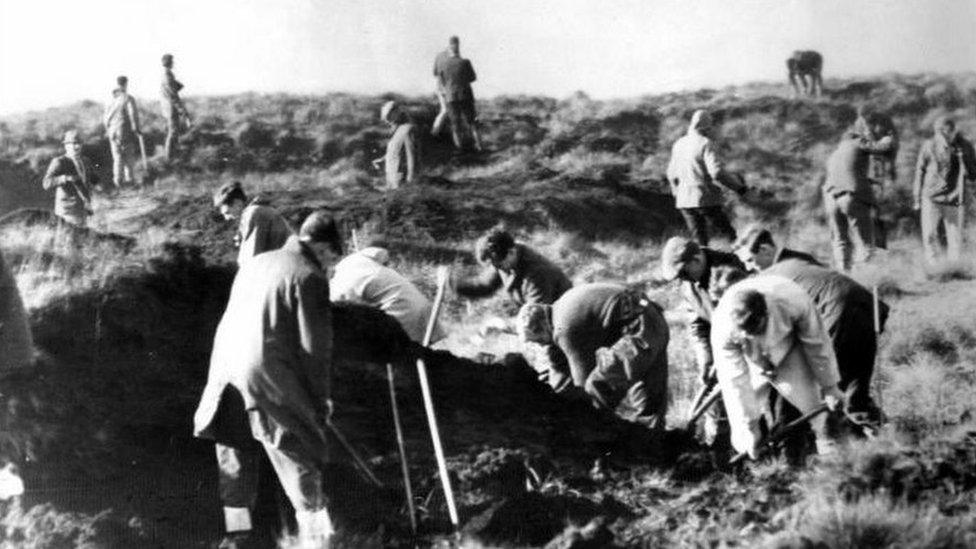How common are child abductions in the UK?
- Published

Police have stepped up patrols in Oxford after a teenage girl walking to school was abducted and sexually assaulted.
It's every parent's worst nightmare. But how common are child abductions?
The charity Action Against Abduction, formerly Pact, estimates that roughly 50 children under the age of 16 are abducted by strangers every year.
Its report Taken, external, which used data from UK police forces in 2011-12, found that 42% of all abduction attempts were made by strangers - and three quarters of the attempts were unsuccessful.
The average age of abducted children in the UK was 13, while the average age of children who suffered attempted abductions by non-parental perpetrators was 11, according to the report.
Action Against Abduction claims that most of these cases are sexually motivated, yet many attempted abductions are not reported to police.
However, offences by strangers are still quite rare - with the NSPCC pointing out that more than 90% of child sexual abuse is perpetrated by someone known to the child.
Worst case scenarios
Geoff Newiss, chief executive of Action Against Abduction, said the "old fashioned scenario" of a man luring a young girl into a car has not changed all that much.
The charity's report found that in 2011-12, three quarters of stranger abductions involved girls and more than two-thirds of stranger abductions involved a perpetrator in a car.
However, he said: "People tend to think of the very worst case scenarios - the Sarah Payne case or April Jones. They tend to think about murder. But there are a very small number of homicides".
Both eight-year-old Sarah Payne, external and five-year-old April Jones were abducted and killed by paedophiles in 2000 and 2012 respectively.

Eight-year-old Sarah Payne was abducted and killed in 2000
Mr Newiss pointed to the "varying degrees" in severity of abductions, and of stranger-related offences.
He said: "Most are, or believed to be, sexual exploitation", but he said that the majority involve indecent exposure, touching or fondling.
A 2008 study by the University of Huddersfield, external found that 41% of stranger-perpetrated sexual abuse and abduction cases involved indecent exposure, 26% touching and 23% abduction.
The study, which was based on a questionnaire completed by 2,420 children in the north-west England, found that nine out of 10 reported abductions were attempted and not completed.
Latest figures from the NSPCC's Childline helpline, external show that the internet is increasingly being used as a gateway for offenders to commit crimes including sexual assaults, sexual exploitation and grooming.
Childline sessions related to grooming have risen by 21% in the last year, it said.
Across the board, the number of child sex offences reported to the police throughout the UK rose to a record 45,456 last year, according to the NSPCC.
'Unreported attempts'
Following the abduction of the Oxfordshire schoolgirl on Wednesday, an NSPCC spokesman said: "This has been a horrific experience for the girl and her family and parents in the area will understandably be very worried, but thankfully random abductions of children are relatively rare.
"It's essential that the perpetrators are caught before they harm any other children and that the girl is offered whatever support she needs to recover and to give evidence if a successful prosecution is brought."
The problem is that many attempts go unreported, said Mr Newiss. Certainly, the 2008 study claimed that only 33% of incidents it recorded were reported to the police.
He estimates that one in every 100 children face an abduction attempt at some point in their childhood or teenage years.
"The police numbers are the tip of the iceberg," he said.
"It's important to tell the police about attempted abductions as there may be more than one incident in an area which is important. They can't do anything if it's not reported".
Brian Lightman, former general secretary of the Association of School and College Leaders said while schools have "extremely rigorous" safety checks in place preventing strangers from entering school compounds, outside the school gates people need to be vigilant.
Mr Lightman said: "There is a need to be vigilant - to be careful and educate your children of the dangers - but also the need to ensure that there's a balance.
"Remember that they [abductions] are very rare. You can closet children too much."
He advised children to walk to school in groups and for parents to always be aware of where their children are.

Keeping children safe

Before children head out on their own, parents or carers should think about how well their children can deal with risks - from crossing the road to being out late.
Make sure they are happy to venture out alone and set any boundaries you have - being clear about where you don't want them to go and why.
Use an outing together as a trial run - let them take the lead and see how they cope. Show them that they can be trusted but don't feel pressured if you think they are not ready.
Ask yourself the following:
Where and when do they want to go?
What do they want to do there?
Who's going to be with them?
How far away are they going?
What time will they be back?
How can I reach them?
Source: NSPCC

'Stranger danger'
Mr Newiss said the biggest concern is that people still talk about "stranger danger" - the government's awareness campaign which began in 1971.
"This comes from the early 70s and it just doesn't work now. We want to see an end to that focus on strangers and more aware of danger in general," he said.
He said that too often children are told to do as adults say, but that they should be made aware that no adult should ask them for help, or ask them to get in a car.
"Children need to be told to trust their instincts more," he said, urging people to join the charity's Safe, Not Scared campaign as an alternative approach.

The government's "stranger danger" campaign was in part a reaction to events such as the Moors' murders
Back in 1971, the government was responding to some horrific cases of child abduction, including the Moors murders, external and the Cannock Chase murders of the 1960s.
That year, the Home Office recorded just 33 child abductions in England and Wales. These included all types of abduction - parental, other family, known but not related and stranger - as well as completed and attempted abductions.
In 2014-15, according to a report by Action Against Abduction, external, there were 1,141 cases, including 618 non-parental abduction attempts across England, Wales and Northern Ireland, according to Action Against Abduction.
However, the charity has warned against interpreting the jump since the 1970s as a real increase, explaining that police reporting processes have changed a great deal during that time.